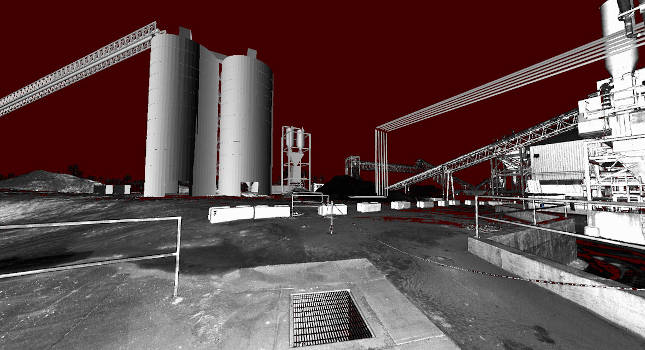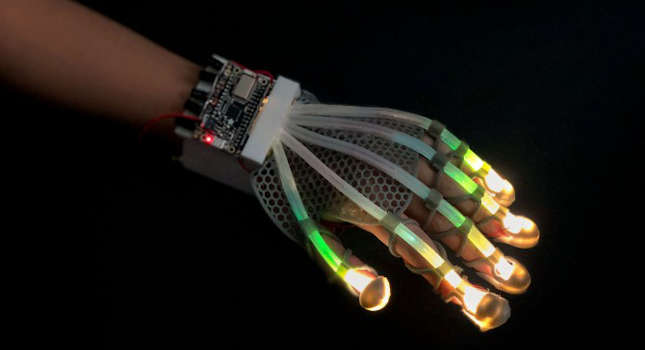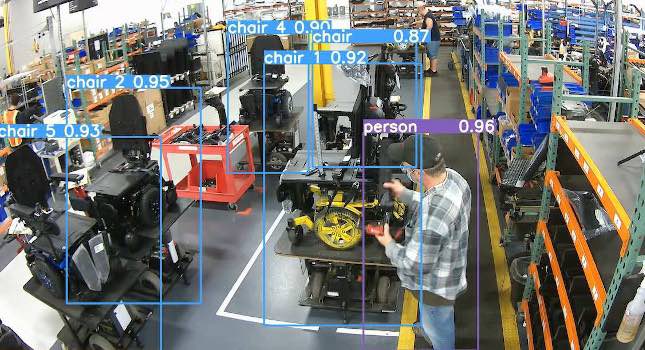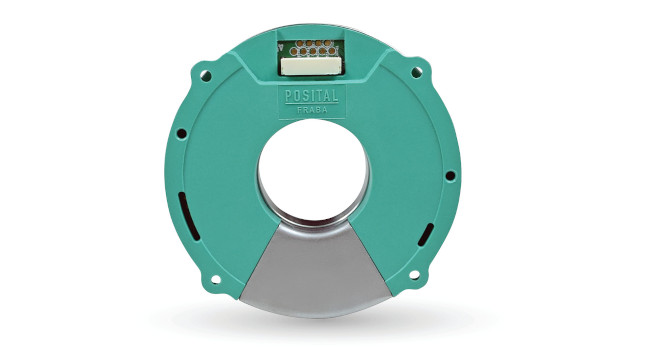Tried and true centrifugal pumps have been used for years and should run troublefree. Improvements in containment, efficiency, and reliability have helped keep them among the workhorses of industry (Fig. 1).
Tried and true centrifugal pumps have been used for years and should run troublefree. Improvements in containment, efficiency, and reliability have helped keep them among the workhorses of industry (Fig. 1). Refinements include innovative pump controls, variable speed drives, remote telemetry monitoring, new materials such as composites and ceramics, and sealless designs.
All of these improvements provide the potential for reliable performance. However, this potential can never be fully realized unless four basic steps are followed: proper selection, correct installation, appropriate operation, and timely maintenance and repair.
Selection
Operating conditions, bearings, and seals are among the most important factors in pump selection.
Centrifugal pumps should be normally operated at or near the manufacturer’s design-rated conditions of head and flow. This location is usually the best efficiency point (BEP). Pump impeller vane angles and size and shape of the internal liquid flow passages are fixed and designed for only one point of optimum operation. For other flow conditions, these angles and passages are too large or too small.
Pump bearings hold rotating parts in their proper position and are sized to handle the radial and thrust loads generated by the impeller. While bearing selection is usually not offered, there are some fine points in bearing construction to consider that can increase pump reliability. For example, a retainer ring or cage is used to separate the rolling elements and route them through the load zone. Riveted or spot-welded steel strip retainers are the most prone to fatigue failure.
Bearing retainers are often ranked by desirability:
– Phenolic
– Machined bronze
– Stamped brass strip
– Stamped steel strip
– Riveted steel strip.
Some pump impeller designs drastically reduce bearing loads or prevent seal leakage while pumping or running dry. One design uses a pair of disks with or without radial vanes to create frictional energy to move the fluid. Pressure is balanced between the disks and very little load is transferred to the bearings.
Another design uses a more conventional impeller with vanes on the back side to pump fluid away from the shaft seal. The shaft seal sees no fluid — clear or abrasive — while the pump is running and restricts leakage only when the pump is not operating.
There are two other ways to eliminate bearing and seal problems with centrifugal pumps: canned motor drives and magnet drives (Fig. 2). These designs eliminate seals completely, and internal bearings are lubricated by the pumped fluid. Magnet drives have some outboard bearings that are usually sealed. A trade-off in reliability in these designs requires careful application and monitoring to avoid sudden, catastrophic failure.
Installation
Foundations and alignment are two of the most critical aspects of centrifugal pump installation.
Anchor bolts should be properly and accurately set in a concrete foundation. The bottom surface of the foundation should be chipped to allow grout to adhere. Base plates alone, without a pump or driver, should be cleaned, set in place, and leveled before grout is poured. Grout bonds the base plate to the foundation and transmits all forces and moments generated by the pump, driver, and piping to the foundation. Weight of the foundation should be at least three times that of the pump, coupling, and driver
Alignment of the pump and driver ensures that bearings and seals do not have extraordinary loads imposed on them. Alignment should be checked initially and again after the piping is connected (Fig. 3). It is important to have the piping supported independently of the pump.
If the pump is used to move hot liquids, alignment should be made with the unit at operating temperature. After hot alignment, dowel the pump and driver to the base plate. Dowel only the feet closest to the coupling. This technique allows the outboard ends to expand due to temperature changes. Expansion joints must be used in piping lines to help allow for expansion.
Operation
Any pump operated at excess capacity — at a flow significantly greater than best efficiency point (BEP) and at a low head — surges and vibrates. These reactions create potential bearing and shaft-seal problems, as well as require excessive power.
When operating at a reduced capacity, at a flow significantly less than BEP, and at a high head, fixed vane angles cause eddy flows within the impeller and casing and between the wear rings. Radial thrust on the rotor increases, causing higher shaft stresses, increased shaft deflection, and potential bearing and mechanical seal problems. Radial vibration and shaft axial movement also increase.
Continued operation in this mode results in accelerated deterioration of mechanical and hydraulic performance and ultimate failure of the pump.
While published performance curves often show smooth, stable operating characteristics from zero to well past the BEP flow capacity, there are pumps that cannot function over these wide ranges. Many pumps cannot operate below 50% of BEP flow without incurring severe hydraulic instabilities.
The cause of these problems is internal recirculation, which is related to suction specific speed, NPSHR, efficiency, and pump range. Recirculation generally occurs while operating below the BEP flow rate, but can occur when the flow rate exceeds BEP. Protection from instability during low-flow conditions is provided by a bypass system or speed reduction.
During recirculation, internal flow is unstable, with the possibility of violent changes in flow occurring. Stall, back flow, eddy-type circulation, turbulence, and cavitation can all take place (Fig. 4). Frequently, when severe recirculation occurs, loud popping or banging noises are heard at random frequencies from the pump.
In addition, random hydraulic pulsations may be observed in the suction piping up to several pipe diameters upstream. Intensity of these noises and pulsations can increase as flow is reduced. The result is shortened bearing life and leaking seals and piping.
If system requirements call for capacities that differ significantly from the design point, the pump operates at a lower efficiency. The drop in efficiency is due to increased internal losses from recirculation. The pump driver has to provide more energy to overcome these losses, energy that goes into producing heat in the pumped fluid.
Maintenance and repair
A log on pump operation can prove invaluable in diagnosing any problems that may develop. Such a log should include operating hours, packing adjustments and changes, lubrication changes or additions, and other maintenance procedures. It is helpful to include periodic readings of suction and discharge pressure, flow, power input, fluid and bearing temperature, and vibration and noise levels.
Wear rings prevent higher pressure fluid from leaking internally back to the suction side of the impeller. They also provide a means of controlling or minimizing the hydraulic thrust of the pump. Because they influence pump performance, increased clearance can raise power requirements by 5% to 7%. It is economical to replace wear rings whenever the initial clearance doubles.
Maintenance of a stuffing box consists primarily of packing replacement. However, most packing problems are a direct result of improper installation.
There are several guidelines to follow for packing seals:
– Inspect shaft or sleeve for damage
– Clean bore of stuffing box
– Use preformed or die-molded rings
– Use a split bushing packing tool
– Stagger joints 90 deg
– Keep gland square
– Compress packing briefly
– Loosen packing and turn pump by hand
– Start seal flush, then start pump
– Allow 20 to 30 min run-in
– Tighten gland bolts so leakage is normal.
Mechanical seals can be classified into two basic types. Pusher types have a secondary seal that slides along the shaft sleeve. Nonpusher or bellows types have the secondary seal fixed to the shaft. Respect the primary sealing faces and secondary sealing areas. Do not scratch, nick, handle, lubricate, or get those areas dirty. Even a fingerprint can cause a seal to leak. Follow the manufacturer’s detailed instructions for successful installation and operation.
Pump bearings must be properly lubricated. Maintain the required level for oil-lubricated bearings. Bearing damage can occur if the level is too high or too low. Grease lubricated bearings should have the lubricant changed about every 6 mo. A sudden rise in bearing temperature is generally a sign of malfunction and should be resolved before a failure occurs.
When pumps are used intermittently or for emergency service, it is good practice to operate them for a few minutes every few days. If this is not possible, the rotor should be turned by hand a few times at least once a week.
Plant Engineering magazine extends its appreciation to The Gorman-Rupp Co., Goulds Pumps, Inc., and Ingersoll-Dresser Pump Co. for their assistance in the preparation of this article. The cover picture was furnished by The Gorman-Rupp Co.
– – Joseph L. Foszcz, Senior Editor,847-390-2699, [email protected]
Key concepts
Enhance pump reliability with proper selection, installation, operation, and maintenance.
Align pumps and solidly install them without stresses.
Operate pumps near their best efficiency point.
Basic pump rules
Following certain fundamental rules help achieve reliable service, least expensive maintenance, and longest possible life from centrifugal pumps.
Selection
Choose pump for liquid handled
Check for required capacity
Analyze suction conditions
Analyze discharge conditions
Determine if service is continuous or intermittent
Installation
Ensure pump foundation is rigid
Grout pump bed plate
Check alignment
Relieve piping strains on pump
Provide vent valves at high points of pump
Provide warm-up connections
Provide bypass connection
Provide source of cooling water
Install suitable gauges and flowmeters
Operation
Don’t throttle suction to reduce delivery
Don’t run dry
Don’t run at excessively low flows
Monitor operation
Don’t completely stop leakage from stuffing box
Use new packing when repacking stuffing box
Ensure adequate flush flow for mechanical seals
Don’t use excessive flow for water-cooled bearings
Don’t use excessive lubricant
Follow recommended inspection intervals
Repair and maintenance
Use care when disassembling
Thoroughly examine and recondition metal-to-metal fits
Clean and refinish waterways
Use new gaskets
Examine impellers for corrosion, erosion, or cavitation damage
Check concentricity of new wear rings after mounting
Check all parts mounted on rotor
Restore shaft or sleeves to proper condition at stuffing box
Carefully mount bearings
Keep a record of inspections and repairs
Pump storage
Pumps not installed immediately should be protected. All unpainted surfaces should be covered with a suitable rust preventive. Lubricated bearings should be filled with the proper oil. Greased bearings should be repacked with the correct grease only; do not mix greases.
Remove the packing from packed pumps and grease the packing gland. Pumps with mechanical seals should not have the seals disturbed; do not remove them. Handle the entire pump carefully, and do not use the shaft for lifting or leverage.
Hints
– Clean pump exterior
– Flush suction line, discharge line, pump casing, and impeller of all solids by pumping clear liquid for a short time
– Drain pump casing, suction line, and discharge line
– If complete draining is impossible, add a small amount of antifreeze into the pump casing; rotate shaft for mixing
– Drain oil from bearing housing and refill with clean oil; flush out grease and refill
– Seal off suction and discharge ports
– Store in a clean, dry area
– Protect motor windings from excessive moisture
* Spray interior of pump casing with antirust and anticorrosion fluid
* Rotate pump shaft once a month to avoid freeze-up and lubricate bearings
Symptoms and causes of pump failure
SYMPTOMS
Intermittent Bearings fail Mechanical Packing
Cause pump flow regularly seals fail has short life
Pump not primed or prime lost x — — —
Insufficient NPSH — — x —
Excessive air in liquid x — — —
Broken impeller or bent vanes — — x —
Air leak in suction line x — — —
Excessive shaft misalignment — x x —
Inadequate lubrication — x — —
Lubricant contamination — x — —
Inadequate lubricant cooling — x — —
Excessive axial or radial loads — x — —
Suction pressure too high — x x —
Bearing incorrectly installed — x x —
Impeller out of balance — x x —
Overheating of seal faces — — x —
Excessive shaft deflection — x x —
Lack of seal flush — — x —
Incorrect seal installation — — x —
Pump run dry — — x —
Pump run off design point — x x x
Shaft/sleeve worn — — x x
Packing gland not properly adjusted — — — x
Packing not properly installed — — — x
Coupling out of balance — x x —
Baseplate not installed properly — x x —
Piping not properly anchored — x x —
Pump/driver not secured to base plate — x x —
Specific gravity higher than specified — x x —
Pump assembled incorrectly — x x x
More info
There are several related articles previously published:
“Centrifugal Pump Failure Analysis” (PE, 9/23/93, p 56, File 4010)
“Basics of Pump Designs” (PE, November 1994, p 48, File 4010)
“Extending Seal and Pump Maintenance Intervals” (PE, July 1995, p 83, File 4099)
“Achieving Optimum Pump Performance (PE, May 1996, p 87, File 4010)
“Selecting the Right Centrifugal Pump (PE, January 1997, p 69, File 4010)
“Solving Compression Packing Problems” (PE, August 1997, p 66, File 4099).



